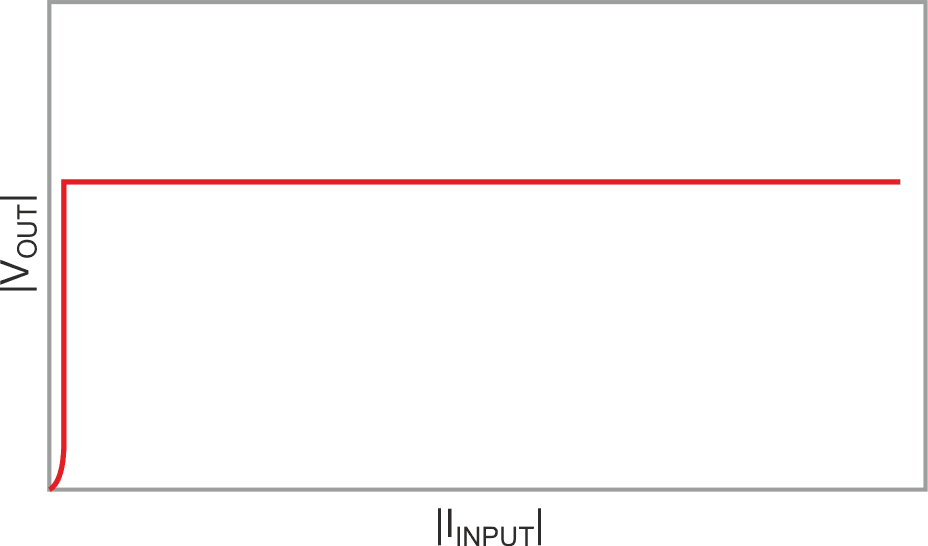When parts have been around as long, and in such widespread use, as the venerable LM317 and LM337 (and their siblings), you tend to think every trick that can be played with them is already in the (data)book. So, when the question arose whether these extremely well understood parts, that are always described in their respective data sheets as exclusively series regulators, might somehow be connected up to achieve a shunt topology, it seemed pretty far-fetched. Consequently, the possibility of the circuit in Figure 1 came as a surprise. The chip internal schematic is helpful in understanding how this monstrosity works.
 |
|
| Figure 1. | Three terminal regulator (e.g. LM317) in the (positive) shunt configuration. |
When connected as shown, the standard “three leg” will begin to conduct as Input current is brought from zero and VOUT approaches the programmed setpoint voltage VSET, causing VADJ to approach –1.25 V. This causes the internal Zener cathode to therefore rise to 0 V, and the internal regulator control amplifier to turn on the internal Darlington pass device. These design equations will then apply:
Let VREF << –1.25, e.g., –5

When VSET is attained, U1 transitions to a very low-impedance (single-digit milliohms) super-Zener-like mode, as shown in Figure 2 and clamps VOUT to the programmed setpoint. Note the absolute value marks that show the circuit can accommodate both I/O voltage polarities with appropriate choices for U1 and VREF.
 |
|
| Figure 2. | Shunt mode I/V curve; when the programmed setpoint voltage VSET is attained, U1 transitions to a very low-impedance and clamps VOUT to the programmed setpoint. |
For a specific design example, let:
VSET = 12 V
U1 = LM317
VREF = –5 V
R2 = 1k
Then:

Negative polarity regulation can be accommodated by doing the following:
- Replace the LM317 with a LM337
- Replace the negative VREF with a positive VREF
Note the max/min absolute value of 40 V > VSET > 3 V and 1.5 A > IINPUT > 10 mA per 317/337 regulator datasheet specs.
C1 may be required for dynamic stability. See datasheet recommendations.
